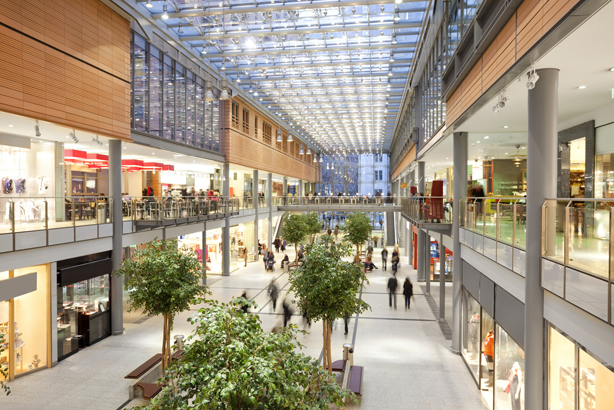Retail spaces, shopping centres and malls have taken drastic electrical design shifts in recent years to match technological advancements and changing retail experiences. What this means for most retailers, developers, and electrical engineers is a focused emphasis on LED lighting, connectivity and flexible design solutions. These changing elements in retail spaces are not only having a big impact on the look and feel of a store but also the customer experience.
The Move towards LEDs and its Impact on Retailers
Lighting design remains one of the most crucial elements retailers factor into their spaces. Not only does a store’s lighting impact how products are displayed and highlighted, but it also creates an ambience and mood for the customer. With the recent adoption of LED lighting across almost all building types, electrical engineers and architects now have a new level of control over colour temperature, luminosity and directional lighting.
Choosing a colour temperature that matches the retailer’s desires is as simple as choosing the right LED. More often than not, a retailer will opt for a cool white or daylight LED bulb that ranges from 3500-5000 on the Kelvin scale. These lights are typically not so warm that they make customers feel tired and also not so cold that they seem uninviting. Depending on the type of store, it may be more advantageous to implement warmer or cooler tones. An electronic or jewellery store could use a cool white bulb to give products a nice sparkle and shine, whereas warmer, more relaxing tones could be used at a spa or café. Another option for many retailers currently is to use dimmable LED lights that can adjust vibrancies throughout any given day. This is especially beneficial when combined with sustainable practices like daylight harvesting.
Another great property LED lights offer retailers is their directional luminance. When designed and placed properly, LEDs can light key parts of a store to create contrast or highlight certain products or sections. Accent lighting can also be used to make a store seem more interesting as opposed to traditional retail lighting that often used fluorescents and dull flood lighting.
Although lighting design often varies drastically from retailer to retailer, there’s no question the innovative impact LED lighting is having on creating store spaces that cater to a heightened shopping experience for customers and a reduced energy bill for building owners.
Connectivity for Customers and Security
The importance of internet connectivity in a retail space has become paramount to ensuring customers have access to WiFi and that a store’s infrastructure works efficiently. Electrical engineers and network specialists have to be more and more cognizant of the WiFi hotspots and network equipment when designing for big box stores or small retail chains that depend on a steady network. Additionally, having reliable connectivity also ties into the retailer’s option to use WiFi-supported security cameras and equipment. Utilizing a strong network can ultimately save the retailer and designer a lot of time and money by avoiding complicated wiring and initial setup.
Flexible Electric Designs for Retail Spaces
Malls and shopping centres are constantly changing to meet varying demands by pre-existing tenants or altogether new retailers and businesses. Ensuring a space can handle future electrical loads and changes—whether as a renovation or new construction—can effectively prepare a shopping centre or mall to transition tenants in and out smoothly. More and more often, electrical engineers are designing to ensure electrical requirements and specifications fit a flexible framework for future alterations or expansions. Knowing that a clothing store can be refitted into a restaurant or a new space, given a tenant’s demands, provides a value-added and forward-thinking approach to the changing retail landscape.
As retail spaces continue to move towards more sustainable designs and adapt to a shifting retail marketplace, so will the designs of engineers, developers and architects. Factoring in the impact of LEDs and more experimental, consumer-focused retail spaces for our clients remains crucial to our team’s ability to stay one step ahead and deliver quality engineering solutions.
